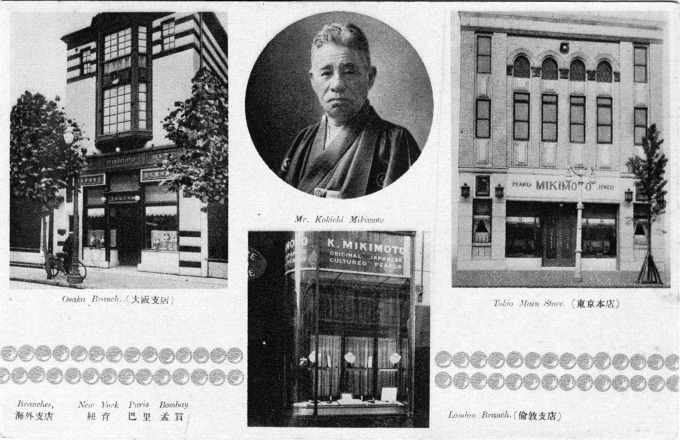“If properly irritated in a scientific manner, oysters produce big lustrous pearls. They are called cultured pearls and in Japan the cultured-pearl business has suddenly come back to lusty life, having found a lush and handy market in the U.S. occupation forces. Strings of cultured pearls selling at $20 to $130 [$265-$1727 in 2019 US dollars] are the most popular items in PXs throughout Japan. As a result the man who is Japan’s unchallenged pearl king, wizened, 89-year old Kokichi Mikimoto, made $200,000 [$2,622,123 in 2019 US dollars] during the first year of the American occupation, which gave him the biggest personal income in Japan.
“… His role in occupied Japan is important because the Japanese government, which has frozen domestic sales of both pearls and silk, hopes that exports of luxuries will help to meet Japan’s war indemnities and pay for food imports. Some of his best products, however, are being hoarded for a reopening of world trade.
“At present he has a stock of tiny mother-of-pearl beads sufficient to raise about 15,000,000 cultured pearls. Before that runs out he must send agents to the U.S. because a major source of the mother-of-pearl beads he inserts into his oysters is in, of all places, the Mississippi River where it passes Iowa.”
– “The Pearl King”, LIFE magazine, September 16, 1946

Mikimoto Kokichi and his Mikimoto Pearls storefronts in Osaka (left), London (center), and on the Tokyo Ginza (right), c. 1950. Mikimoto opened his first pearl shop in Tokyo in 1899.
“Mikimoto Kōkichi (1858–1954) was a Japanese entrepreneur who is credited with creating the first cultured pearl and subsequently starting the pearl industry with the establishment of his luxury pearl company Mikimoto.
“Born as the first son of an udon shop owner in Toba, Shima Province (present-day Mie prefecture), Mikimoto left school at the age of 13 and sold vegetables to support his family. Seeing the pearl divers of Ise unloading their treasures at the shore in his childhood started Mikimoto’s fascination with pearls.
“In 1888, Mikimoto obtained a loan to start his first pearl oyster farm at the Shinmei inlet on Ago Bay in Mie prefecture with his wife and partner Ume. In 1893, after many failures and near bankruptcy, he was able to create the hemispherical cultured pearls. However, it took him another 12 years to create completely spherical pearls that were indistinguishable from the highest quality natural ones, and commercially viable harvests were not obtained until the 1920s.
“In 1899, the first Mikimoto pearl shop opened in the fashionable Ginza district of Tokyo selling natural seed pearls and half round pearls. The Mikimoto business expanded internationally, opening stores in London (1913) and, following World War II, in Paris, New York, Chicago, Boston, Los Angeles, San Francisco, Shanghai and Bombay, and was thus one of the first Japanese brands to attain an international presence and recognition.”
– Wikipedia


Pingback: Ginza Crossing, c. 1910-1940. | Old Tokyo
Pingback: Hattori (Wako) Building, Ginza. | Old Tokyo